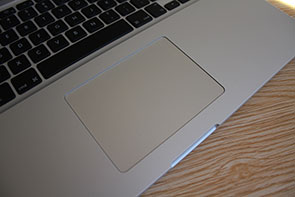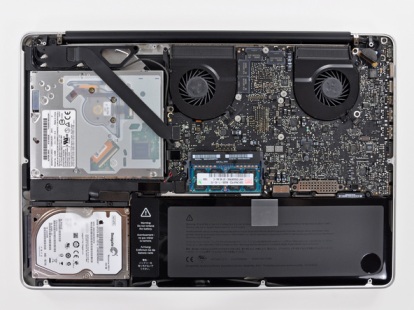Most of my life I’ve worked on either Windows or Linux (in various flavors). Most of my software development experience has been on a Linux machine, and they’re amazingly productive when compared to Windows. The main reason for the increased productivity is that Linux machines require significantly less configuration for developers. Most of the toolchain you use in development is already there, or can be installed and configured into place in under 10 clicks of your mouse.
Recently however I’ve been using a MacBook Pro, and I’ve gone from a fanatical devotion to my Linux machine to a fondness for the Apple. I decided to write out a list of the things I’ve noticed about these machines that makes them so ideal for software development.
Note: this is really just my opinion on the subject, don’t take it to seriously 😉
Spotlight is Productivity Defined
There are several desktop based search tools for both windows and linux, but they don’t even come close to how powerful Apple Spotlight is. If you’re used to a keyboard driven environment you’ll absolutely love it. Not only for just starting your software, but for amazingly quickly finding that document you were reading the other day… the one that said something about “too much fresh fruit”.
It’s BSD Based Underneath
Thus a flavor of Unix. Whatever Unix derivative I’ve developed on over the years, they have always been (for me) more productive than Windows. I’ve found that the single most important reason for this actually appears to be the implementation of the file system layer. Unix implementations tend to have a more robust and flexible file system implementation, while Windows seems to be of the opinion that it’s always going to be a desktop machine, and if something goes wrong you can shut it down and do a scandisk (and yes I have used Windows 7, it’s still broken).
The better file system layer plays directly into software development. Source control tools such as Subversion, databases and web servers all tend to have less problems on a Unix file system than on Windows. Yes the tools could probably be modified to better handle the Windows filesystem, but should that really be necessary?
Gesture Recognizing Touch Pad
 Spend in hour or two using the touch pad on a Mac and you may find it difficult using any other touch pad. The ability to switch from scrolling to clicking to navigating without actually moving to different areas of the pad makes a huge difference.
Spend in hour or two using the touch pad on a Mac and you may find it difficult using any other touch pad. The ability to switch from scrolling to clicking to navigating without actually moving to different areas of the pad makes a huge difference.
The other thing everyone comments on, and I’ll definitely add my voice to is the size of the touchpad. It’s so huge I don’t miss a mouse in the slightest. In fact quite the opposite, I would far rather develop software with a MacBook Pro touchpad than with a mouse. Main reason: it’s much closer to the keyboard, I don’t need to move my hand over to the mouse to scroll or navigate code or documentation.
Finally (and a bit unusual maybe), the ability to smoothly scroll horizontally as well as scale (with the pinch gesture) makes viewing diagrams much easier than previously. Most touchpads emulate a mouse-wheel when they scroll, and most diagram software tends to interpret this as very slow scrolling, or scrolls in “lines”. Both of these behaviors are very annoying and effectively wrong.
The Keyboard is Incredible
It’s not just the fact that it’s a clicklit keyboard, it’s the size and spacing of the keys. The arrangement of the keyboard is similar to a desktop keyboard, but since it’s a laptop the keys don’t sink as far, they tap away with a very satisfying “click” sound. The backlight is also brilliantly useful for late-night coding, but you can find that on many different laptops today.
The default keyboard shortcuts also make abundant sense when you’re using these keyboards. Some of the characters are not quite where you expect to find them at first, after a short time of using them I’m wondering why all QWERTY keyboards aren’t arranged like this. Finally: many of the symbols that you’d normally open a character map application for are accessible directly from the keyboard. It’ll take you a bit of time to get used to the fact that you can type a ± or Ω with just 2 keys, but it’s a brilliantly useful ability.
It’s Just Built Better
Having looked at a large number of laptops, both off-the-shelf and customized builds I’ve found that the MacBook Pro is actually surprisingly good value for money: if you know whats inside. It’s small details such as one laptop using a Core2-Duo while the same priced MacBook is an i5 CPU. Theres also the size of the battery, which for some is less important than others. If you take a look at the image on the right you’ll see just how much physical space the battery takes up in the 15″ variation of the MacBook Pro: it’s huge! It’s actual capacity is 77.5 watt-hours, compared to a similarly priced Lenovo laptop which has just 48 watt-hours.
Another “feature” is the fact that the MacBooks all have DDR3 memory in them where most of the competition is still using DDR2 (and often really cheap DDR2 at that). The MacBooks also generally have more memory by default than similarly priced machines.
Other tiny features that make a huge difference are the amazing lack of cooling vents on the case, the mag-safe power connector that simply falls away when someone kicks your cable, the battery meter on the outside of the laptop.
Add to all of this that the MacBook is generally thinner than it’s competitors and has an aluminium case instead of the normal plastic nonsense and you’ll find that the MacBook will not just out-perform it’s competition but also just feels more solid when you carry it around.
It Just Works
This sounds really corny, and it’s generally a bit of a Mac idiom, but it’s true. When I plugged my Android phone in to do some on-the-device debugging work, all I had installed with the stock Android SDK. With no special device drivers or funny setup work, the device just worked. I set breakpoints, hit them, edited variables, simply put: I controlled the phone from my MacBook with no special setup or configuration. All things considered, this is quite amazing.
